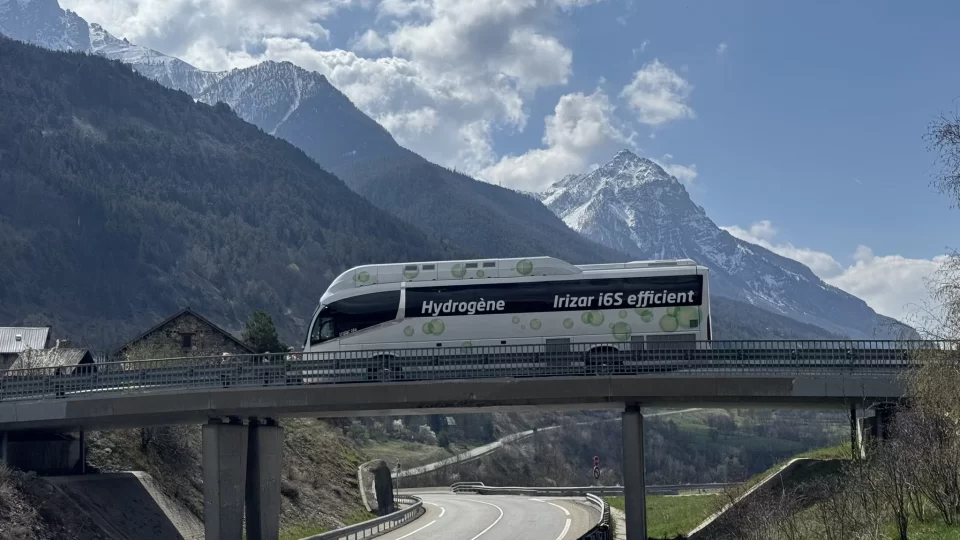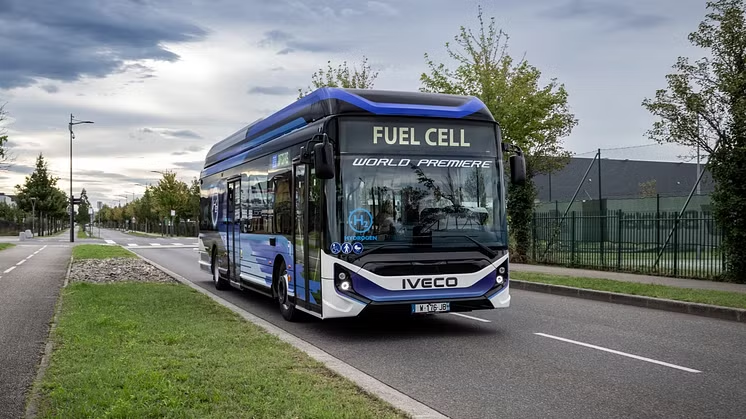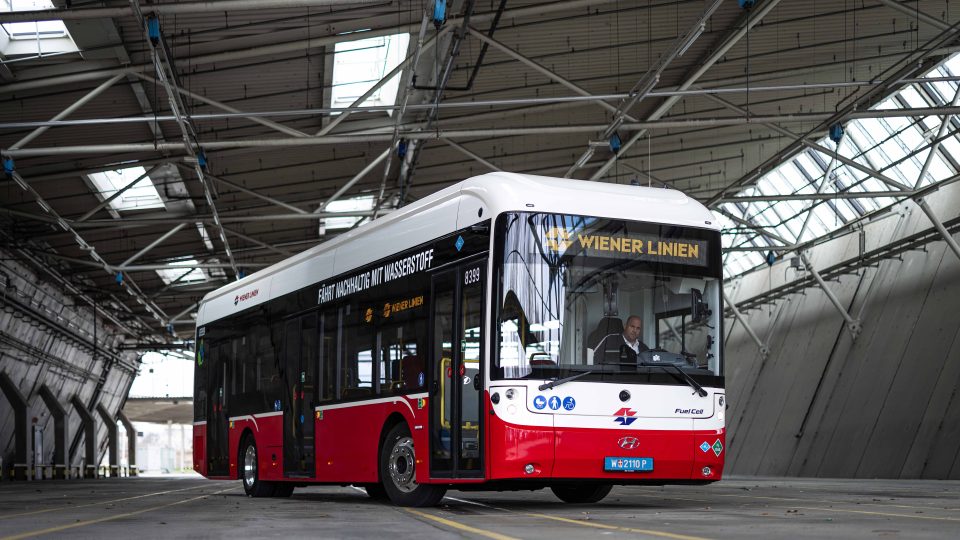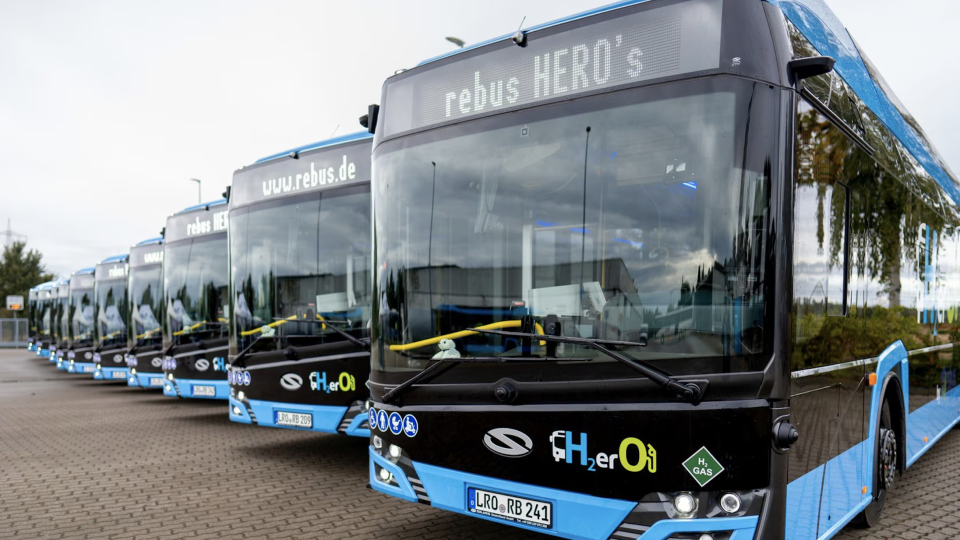Caetano H2.City Gold hydrogen bus in operation with ALSA in Spain
The Caetano H2.City Gold is now in operation for the mobility company Alsa, in Spain. This is the first urban bus powered by renewable hydrogen that will provide stable and permanent service in Spain on an urban line. Specifically, the bus will operate Line 4 in the city of Torrejón de Ardoz (Madrid), which is […]
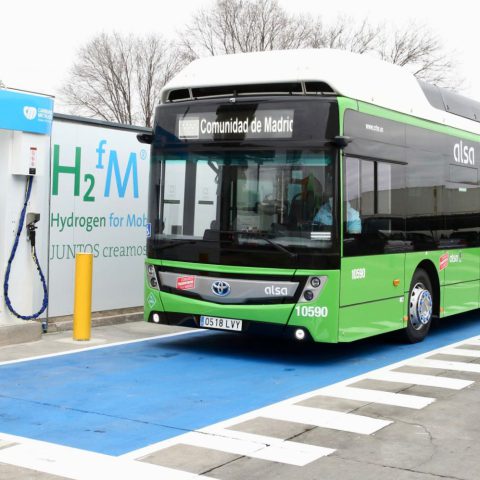
The Caetano H2.City Gold is now in operation for the mobility company Alsa, in Spain. This is the first urban bus powered by renewable hydrogen that will provide stable and permanent service in Spain on an urban line.
Specifically, the bus will operate Line 4 in the city of Torrejón de Ardoz (Madrid), which is part of the public transport network of the Community of Madrid managed by the Madrid Regional Transport Consortium (CRTM). This has been possible thanks to the hydro line launched at the Alsa facilities, the first available in the Community of Madrid for public transport, which guarantees the supply of hydrogen, thus solving this basic requirement for the development of this technology to play a key role in the sustainable mobility of the future.
The bus and the hydro line were presented at the company’s facilities in Torrejón de Ardoz, in a ceremony presided over by the Minister of Transport and Infrastructure of the CAM and president of CRTM, David Pérez García, and the mayor of the city, Ignacio Vazquez Casavilla.
Hydrogen technology by Caetano Bus
The H2.CityGold 12m model is 100% emission-free. It uses hydrogen as a source of energy and its fuel cell, with Toyota technology, generates electricity. Therefore, it only emits water vapor and is free of noise emissions. During the past year, this model has been tested by Alsa in different operations in Madrid, Oviedo, Bilbao and, Zaragoza, to go through the learning curve of this new technology as soon as possible.
For Nuno Carvalho, Chief Commercial Officer of CaetanoBus, «it is a great honor to have a Caetano bus in the fleet of an operator with such a clear concern in the fight against climate change. Alsa’s commitments regarding sustainability are ambitious and we are sure that our buses will contribute with a great environmental performance. It is proof that only alignment between private and public operators, government policies and manufacturers can give good results in this sector».
Alsa has a very clear environmental commitment: Zero Emissions in 2035
This milestone represents another step forward and forms part of the company’s new environmental challenge, which is specified in the commitment that all urban buses operated by Alsa in Spain will be Zero Emissions by the year 2035. This zero-emissions goal is also applicable to long-distance coaches for the year 2040.
This update of the environmental challenge represents a very ambitious expansion of the current commitment, consisting of all urban bus acquisitions being zero emissions by 2030.
For Francisco Iglesias, CEO of Alsa, «this project is a new step in our goal of leading the transition to clean fleets in our country and is part of our commitment to the decarbonization of public transport, which we have recently expanded so that all urban fleets that we operate in Spain are Zero Emissions by 2035. The start-up of this first hydrogen bus in our country is a great example that when public entities, in this case, the CRTM, and private operators work together in search of shared objectives, the results are guaranteed».
First hydro line
For the start-up of this first operation with a hydrogen bus, it has been necessary to install a hydro line, the first start-up in the Community of Madrid for public transport. The installation, which has a capacity of 25,000 liters of hydrogen, has been carried out by Carburos Metálicos, a leading company in the industrial and medicinal gases sector in Spain, which will also oversee supplying renewable hydrogen.
For Miquel Lope, General Director of Carburos Metálicos «the commitment of the Community of Madrid and Alsa to hydrogen-based mobility shows that the technology is mature and ready to contribute to the decarbonization of public transport in the cities of our country. Carbides Metálicos will continue to promote knowledge of these solutions as experts throughout the H2 value chain, from production to supply to vehicles».


